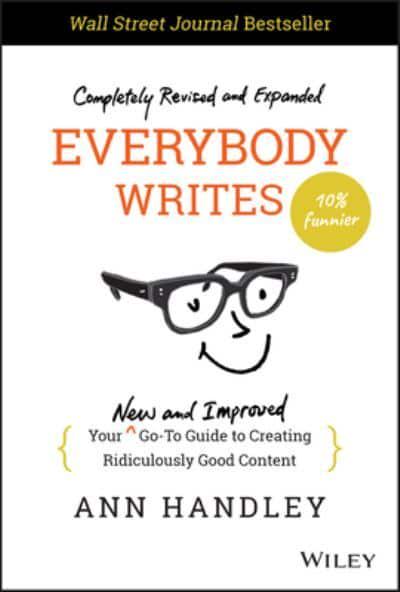
In this essential guide for content marketers, Ann Handley gives us a welcome update to her 2014 book, Everbody Writes. With more than 100 extra pages along with new and updated sections on writing for websites, social media and email newsletters, the book offers valuable lessons and practical examples from a seasoned practitioner of content marketing.
Everybody Writes is for anyone involved in the creative elements of content marketing and starts with a useful definition of what the author means by content:
“Content is everything your customer or prospect touches or interacts with – including your own digital properties and website….But also everything on any social media platform or anything we might co-create in decentralized Web3 world.”
So apart from more pages, what’s new in this 2022 edition? Content marketing has evolved since 2014 and Part 6, 20 Things Marketers Write reflects this. This has grown from 13 Things in the first edition and follows changes to social media marketing, the importance of email marketing and why getting video and image captions right is essential. Rather than having separate sections for Twitter, Facebook and LinkedIn, she has rolled these into one section and focused more on the core requirement for effective social posting. This includes emphasising the personal nature of posts and avoiding overt selling. Handley also recommends cuation with automation. For example, the use of automated robosending direct messages to new followers or connections which can be depersonalising. Writing email newsletters gets more attention reflecting the effectiveness of this medium and, perhaps, the limitations of social posts as ways of connecting with prospects and customers.
There is a useful section on writing tools, particularly distraction-free writing tools such as ilys and Cold Turkey as well as editing tools such as Grammarly and Hemingway. Ann notes that she uses Grammarly daily but enjoys sometimes rejecting its recommendations in the quest to maintain one’s own voice. I suspect that as tools like these become “smarter” and more widely used, the ability of good writers to stand out by having their own tone and style will become more important.
At the heart of Handley’s book are lessons and guidance for how to write for humans and not Google. Yes, SEO is important for much content but it should not be the tail that wags the dog. Frameworks for writing are essential and Ann shows us what these look like. Having a voice and appealing to real people not just algorithms is central. As she rightly points out in Chapter 5, praising a company for “churning out content” rather misses the point. Successful content, in whatever form, takes time to create and, as competition for consumer attention gets harder, will become ever more important. Ann’s book provides essential and accessible guidance for how to do this across multiple formats and should be on the shelf of every content marketer.
And as the cover says, this is all done while being “10% funnier”.